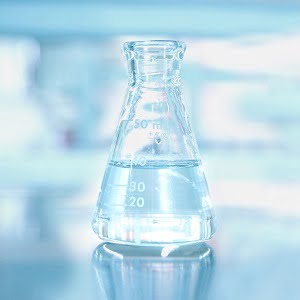
A heat transfer fluid is defined as a liquid or gas that plays a part in transferring heat. It serves as an important intermediary for cooling on one side of the process, by transporting and then storing thermal energy, and then heating at the other end of the process. These invaluable fluids are employed in countless industrial processes and applications that require heating and cooling. They are typically used in a continuous and closed-circuit cycles. For example, water is used to cool vehicle engines, but is also employed to heat water in a central heating system using radiators.
Water is well-known as a popular heat transfer fluid for its affordability, high heat capacity and favourable transport attributes. However, water’s useful temperature range is inhibited by its freezing temperature below 0 °C and its boiling point at elevated temperatures, although antifreeze type additives can assist with the freezing issue.
Today, many dedicated heat transfer fluids are formulated and used in a wide range of applications. Leading heat transfer experts like Paratherm and Shell, among others, manufacture fluids for specific industries using highly advanced additives.
For higher temperatures, silicon-based or synthetic hydrocarbon fluids and oils can offer lower vapour pressure. Molten metals and salts can also be used for both storing and transferring heat at high temperatures where organic fluids will start to degrade. Gases like water vapour, argon, nitrogen, hydrogen, and helium have also been employed as heat transfer fluids in applications where liquids are unsuitable.
Processes where a heat transfer fluid is an essential requirement
In the plastic manufacturing industry, high-quality heat transfer fluids are needed for the polycondensation and polymerisation of polyester, producing synthetic fibres processing nylon, along with PET moulding operations.
However, heat transfer fluids are also crucial for several chemical manufacturing processes including linear alkyl benzene (LAB), phthalic anhydride (PA), dimethyl terphthalate (DMT), alcohols, plasticisers, olefins among other types of petrochemicals.
These built-for-purpose fluids provide several benefits in different chilling, freezing, defrosting, and dehumidifying applications. Fruit processors, wineries, and dairies can all use these fluids to ensure products remain cool while being processed.
Breweries use heat transfer fluids to enable long-lasting and reliable performance by supplying necessary refrigeration along with cooling for the secondary stage of fermentation.
In the pharmaceutical sector heat transfer fluids with a broad temperature range are required as some chemical reactions need high temperature. For crystallising final products, exceptionally low temperatures must often be maintained.
For gas processing operations, impurity removal is vital to avoid fatal consequences. For example, raw gas has various impurities like CO2, water, H2S, as well as volatile organic compounds. These must be extracted before processing equipment can use the gas. Heat transfer fluids are crucial to maintain correct temperatures to extract these impurities.
Some other instances of processes that use heat transfer fluids include maintaining extremely low temperatures in a climactic chamber or wind tunnel or climatic chamber, exothermic reaction when cooling a reactor and using solar energy to make water.
Understanding the different kinds of heat transfer fluids available
Heat transfer fluids generally fall into three different categories: low, medium, and high temperature fluids. Usually, low temperature fluids are utilised below the temperature range of 0°C to 100°C. Examples of low temperature fluid chemistries are silicone oils, hydrocarbons, and salt brines. However, glycols like propylene glycol, bio glycol and ethylene glycol are employed to provide protection from freezing below 0°C and with a suitable additive can be used at temperatures up to 176.6°C. Finally, high temperature fluids are used for applications where temperatures over 176.6°C and up to 350°C are present.
As heat transfer fluids are vital for many important processes, it is crucial for fluids used to always be of the highest quality.
Preferred characteristics of a heat transfer fluid
While the desired qualities of a heat transfer fluid will vary depending on the specific application they are being selected for, there are some attributes that every high-quality product should offer to users.
Heat transfer fluids should always have a low viscosity. Less thick products will ensure the fluid is able to flow freely and easily. As a result, it can greatly reduce pumping cost for the operator.
The heat transfer fluid selected should never corrode the walls of any pipe through which it is flowing. This way, companies can benefit from reduced the maintenance costs of their equipment and far fewer pipes will require replacement, lowering operational expenses further.
High thermal diffusivity and thermal conductivity are also important qualities which effectively increase the rate that heat transfer is delivered through the fluid. Finally, it is always desirable if a heat transfer fluid has a low freezing point and a high boiling point. This helps the fluid to remain stable in the same phase when it is exchanging heat.








































